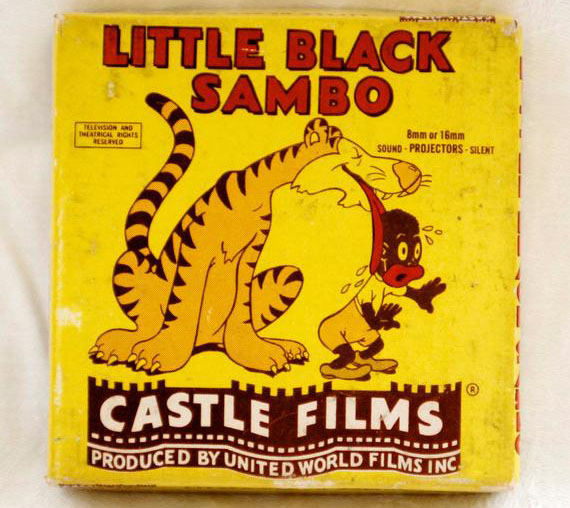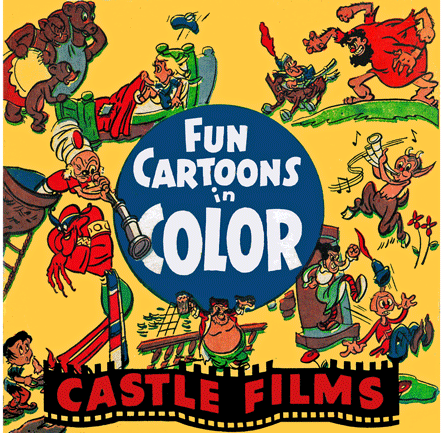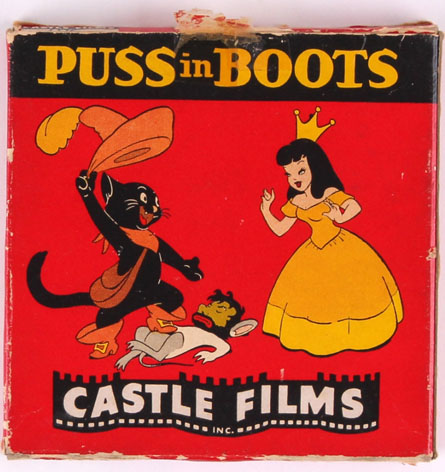
When the department store chain Sears filed for bankruptcy earlier in the year, some reporters noted how special the business had been to African Americans. The company’s distribution of catalogs allowed for African Americans to buy merchandise by mail-order, and in doing so they avoided the humiliation of experiencing Jim Crow at the brick-and-mortar Sears buildings. This convenience endeared the business to African Americans. For example, Roebuck Staples, who led the Staples Singers gospel group, was named after A.C. Roebuck, who was a co-founder of the company with R. W. Sears.
Similarly, buying reels of films for home projection allowed African Americans to watch movies at home and, therefore, not have to endure walking a long flight of stairs to barely see a movie from a balcony. These films had long exited theatres by the time they became available for home projection, but African Americans who noticed them did not focus on the films’ ages as much as on their accessibility. African Americans patronized businesses like Castle Films, which brought old Hollywood cartoons to the home-viewing market.
In the April 20, 1951 issue of Little Rock, Arkansas’s African American-run newspaper Arkansas State Press, Daisy Bates announced the arrival of a “new” cartoon for home use—Walter Lantz’s The Dizzy Acrobat starring Woody Woodpecker. The film was actually eight years old by then and had already been through two theatrical releases, but what mattered was that African Americans could see the film on their own terms and without Jim Crow.

Occasionally, African American access to this market worked against Castle. I wrote in The Colored Cartoon about how in 1949 the NAACP objected to Castle Films’s home-viewer release of Ub Iwerks’s fifteen-year-old cartoon Little Black Sambo. The group complained that the African American images were harmful to children. In a response that defied logic, Castle agreed to withdraw the color prints from circulation but to keep the black-and-white version in stores because the company did not consider the black-and-white version of the same cartoon as objectionable. On the other hand, the department store chain Macy’s promised to pull the film from its shelves.
Despite this misstep Castle’s distribution of cartoons to the home-viewer market helped African American parents to entertain their children in comfort for years.




 Christopher P. Lehman is a professor of ethnic studies at St. Cloud State University in St. Cloud, Minnesota. His books include American Animated Cartoons of the Vietnam Era and The Colored Cartoon, and he has been a visiting fellow at Harvard University.
Christopher P. Lehman is a professor of ethnic studies at St. Cloud State University in St. Cloud, Minnesota. His books include American Animated Cartoons of the Vietnam Era and The Colored Cartoon, and he has been a visiting fellow at Harvard University.



























Going a bit off topic here.
The fact that the overall quality of a YouTube upload of an 8mm film still looks good even when silent and in black & white just shows how much an earlier generation of manufacturers and distributors put so much effort into making product that lasts. Like those Model T Fords, these old films may seem easily disposable but they have surprising resistance to aging.
View-Master put out 3-D reels of Little Black Sambo in 1948 with model figurines. The color is still beautiful in all of these, the one I have and those I see online. Of course, nothing lasts forever. Some View-Masters of the late 1970s turned pink due to cheap film stock used at the time.
Recently I have been unable to play Disney Treasures “Mickey Mouse In Living Color, Vol. 2” DVDs, despite no scratches or deterioration visible. At first I thought something mysterious happened to just mine and tried to replace it, expensively, with another from eBay since Disney long ago stopped making replacement discs. Yet the “new” one won’t play either. Was this because most manufactured at the time had a defect? Or was it due to Disney having a copyright panic and doing something special to ensure the discs had an “expiration date” and can’t be played past a certain date? Oh… the mysteries of life still unanswered.
Try the DVD in a different player or in a computer. Even the top name-brand manufacturers of players sometimes use cheap capacitors in their power supplies, the gel in them slowly dries out and it slightly changes the voltage which makes SOME discs, not all, mysteriously unplayable. You can Google this, it’s a thing.
My Mickey Mouse in Living Color Vol.2 also has stopped playing. None of the other disks in the Treasures series have.
Thanks. Did try that and still no dice. However I am not one to throw things away when there is still a possibility for a miracle.
I should not have brought that topic up on this thread, but it was really bothering me in-this-moment. Also it always intrigues me how some things, like 16mm and 8mm movies and View-Master reel, seem to last almost as long as the Sphinx while so many newer technologies don’t.
Very interesting off topic. Same here, with a “Mickey Mouse in BW” two dvds set.
It is interesting to hear that folks had projectors in their homes to entertain the kids with cartoons. I once had such a projector, with some 8 mm silent cartoons…I even had a silent distillation of the “ROCKY AND HIS FRIENDS” episode, “Ups-a-dazium” and, when I think back on it, that is certainly an odd choice for silent entertainment because there is far too much dialogue in Jay Ward cartoons!! I even had such an edited down version of the “FLINTSTONES” episode in which Dino goes into showbusiness to be closer to his crush, Sassy. My films were in black and white, although I remember looking through the Castle Films catalogue and seeing that there were sound versions of these cartoons, but the projector that was bought for us was silent. I never knew whether or not my father had plans to use that projector or to buy a camera to take home movies, but none of that ever materialized.
So, having projectors in the house was like us having blu-ray players now. Well, the same obstacles would obviously occur as far as what would be deemed insensitive, because you’re dealing with the general public. However, there probably was not quite the collector market that you would hear of today, where huge sets are released to home buyers who happen to like certain films and would like to own them. You usually heard about such collections in Hollywood homes; either celebrities would have the kind of money to collect films, but again, I’m sure that the distribution of these kinds of films wasn’t done to the extent that you would get mint quality copies direct from the studio that once ran them in theaters. I wonder how many African-American homes actually took advantage of this idea and had some of their favorite films in the home. My assumption would be that people in general, regardless of their race, mostly relied on TV, once it became the popular and affordable thing, to entertain them. Having projectors, either sound or silent, was a rarety. Even when we had our projector, I went to stores to look for titles, wanting to own a lot of cartoons as I do now, and I didn’t really find the shelves all that well stocked. I soon felt that the market wasn’t all that great. Again, these are my assumptions; not fact.
According to Scott McGillivray’s CASTLE FILMS: A HOBBYIST’S GUIDE, Castle issued Cinecolor prints of twelve Iwerks Comi-Color cartoons, including LITTLE BLACK SAMBO, in 1942, following up with another three in 1945. Color prints of five of these titles were withdrawn in 1948 with the other ten withdrawn in 1951. Ten of the Iwerks titles, including SAMBO, continued to be available for years in black-and-white prints. Castle’s deletion of color prints of SAMBO from its catalog in 1951 was obviously not unique to that title given that color prints of all Iwerks cartoons still in print were withdrawn that same year.
@JLewis: My MICKEY MOUSE IN LIVING COLOR, VOL. 2 has also stopped working.
Hi James, in case you missed my comment to JLewis above, try the DVD in a different player or in a computer. Even the top name-brand manufacturers of players sometimes use cheap capacitors in their power supplies, the gel in them slowly dries out and it slightly changes the voltage which makes SOME discs, not all, mysteriously unplayable. You can Google this, it’s a thing. Sad but true.
Then again, if we cartoon buffs complain enough online about this, maybe Disney the Corporation will do something about it. Heck, maybe we need Jerry Beck to start up a whole new post just on cartoon DVDs that no longer play and need to be reissued. After all, Warner made it their duty to reissue the earlier Popeye sets when they decided to continue the filmography through the 1940s.
Actually, color prints of “Little Black Sambo,” along with all the other color Ub Iwerks cartoons Castle had in its catalog at that point, were deleted in 1951 because that year, the Cinecolor company abandoned its two-color printing process. Castle used the two-color Cinecolor process to manufacture its color prints of the Iwerks cartoons. That’s why “Little Black Sambo” and several other Iwerks cartoons remained available in black and white. Castle didn’t need the Cinecolor process to manufacture black and white prints.
Whatever Castle said at the time, their decision to delete color prints of “Little Black Sambo” from its catalog and to retain black and white prints of that title was purely business. “Sambo” remained available in black and white until 1968.
If African Americans were buying 8mm films, did anybody try to market reels specifically for that audience? The reels from Castle Films and others were of course derived from major studio output, where African American actors and stories were all but non-existent except as stereotype bits. Did any of the African American movies that did exist get any 8mm or even 16mm exposure?
On my Sony DVD player, the Disney sets won’t play in HDMI, only in the standard “TV’ setting. So you may have to change your playback on the TV so that they play in the standard setting, then you may see a picture!
Funny, I owned a couple of shoeboxes full of Castle Films, but I don’t recall any of ’em being cartoons.
The good news is – and I’m sure you’ll all be excited for me – my Mickey Mouse in Living Color Vol. 2 plays just fine, thank you very much.